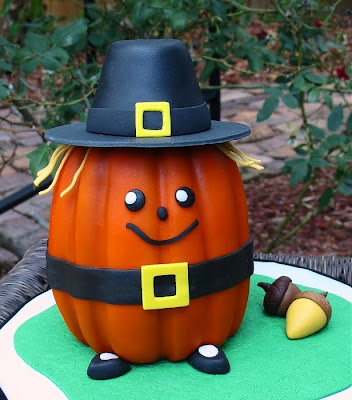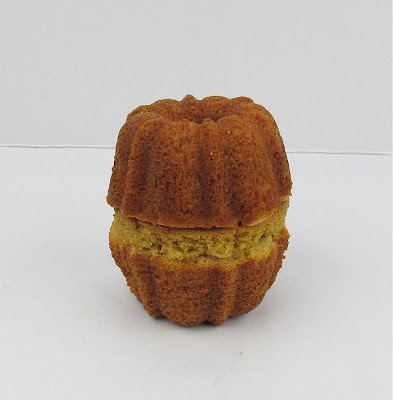Hi guys! Today we have a tutorial from Judy Anderson over at judyscakes.blogspot.com. She is going to show us how to make realistic Fall Leaves, perfect for those Autumn Themed treats we showed you recently!
How To Make Fall Leaves
Fall is my favorite time of year! The harvest season finally is over, the crisp autumn air moves in, and the kids go back to school. It seems that life becomes more relaxed, and everything begins to slow down just a bit. One of my favorite things about this time of year is watching the leaves transform into a beautiful display of colors!
Where I grew up, the leaves pretty much went from green to yellow to dead. Although it was beautiful, those leaves can’t compare to the kaleidoscope of autumn colors found in other areas of the country. I now live in Utah, surrounded by majestic mountains with several canyons only minutes away from my front door. If you drive through these canyons during the fall season, the array of colors you’ll see is simply breathtaking!
A few weeks ago, I decorated a cake with several different fall flowers and leaves. Some people asked me how I made these leaves, while a few even thought they were real! Now that’s quite a compliment! (Pardon me… I’m blushing at the moment. LOL) So I thought I’d put together a tutorial to show you how it’s done.
Part #1 will show you how to cut out the leaves. Part #2 will show you how to color the leaves.
 |
| Here’s a similar example to the one above. Except I used pink gum paste instead of yellow to make the basic leaf. |
Before we get started, here are a few basic rules to keep in mind:
1- Never start out using dark colors.
You can always make a color darker… but it’s almost impossible to lighten it up! This same rule applies to both gum paste and petal dust. By starting out light, it’s easier to vary the value and intensity of each color.
2- Less is more.
Begin by adding colors a little at a time. You can always apply more color later… but it’s very difficult to remove once it’s on.
3- Blend the edges of the colors together.
Doing this will make the colors flow together naturally, so they won’t look spotted or splotchy. Be careful, however, not to over blend!
4- Don’t worry if the tips or small parts of your leaf break off.
The truth about fall leaves is that they’re either drying up or already dead. Take a look at real leaves… you’ll notice that they’re all shriveled up, crumbly, torn, or even have holes in them. Leaves are not perfect. In fact, they’ll look more realistic if they have flaws.
5- Use many different colors of petal dust on each leaf.
Don’t be afraid to make extra leaves and experiment with your colors. You won’t know how they work unless you try them.
6- Use a lot of different brushes.
I use small paint brushes to apply the petal dust. For this tutorial, I used one brush for the yellows, one for the greens, one for the light reds and oranges, and one for the dark reds and burgundy. Plus I had one very tiny brush for only dark brown.
OK… let’s start with the yellow leaf.
 |
| I began by dusting a mid-tone yellow here and there, concentrating on the center of the leaf. |
 |
||||||||
| Then I randomly add light orange to a few other places on the leaf. |
 |
|
| Next, I deepen the color by adding a mid-tone orange to the outside edges of the light orange spots. |
 |
| There’s a huge variety of colors you can make with a basic yellow leaf. Play around a little, and see what kind of colors you can come up with. |
Next up… the red leaf.
 |
| I start by adding a reddish orange color to different parts of the leaf. |
 |
| Next I brush on a mid-tone red to the remaining areas. |
 |
| I deepen a few of the reds by adding an even darker red color. |
 |
||
| Here’s an example of a variety of colors you can achieve by starting out with the same basic pink leaf. Try using different shades of orange, pink, red, burgundy, and even a little dark green. |
These fall leaves are a great way to practice your skills. Don’t be afraid to play around and use a variety of color combinations. You can even try adding blue or purple to your color scheme! If a leaf breaks… don’t worry, it doesn’t matter. You can still use it! The whole idea is to discover new ways to use color and to have fun. You might even be surprised at how artistic you can be!!!
Judy Anderson- Judy’s Cakes
I was an art major in college, so my art background has been very helpful in developing my cake designs. Cake decorating has blended my love for art and baking together into one! I began decorating cakes in 2008. I’m self taught and specialize in making gum paste flowers. Several of my cakes have been published in Cake Central Magazine, and I won honorable mention in their “Wedding Cake of the Year” contest. I’m also an ongoing contributor to the Satin Ice Website.








































































































































































